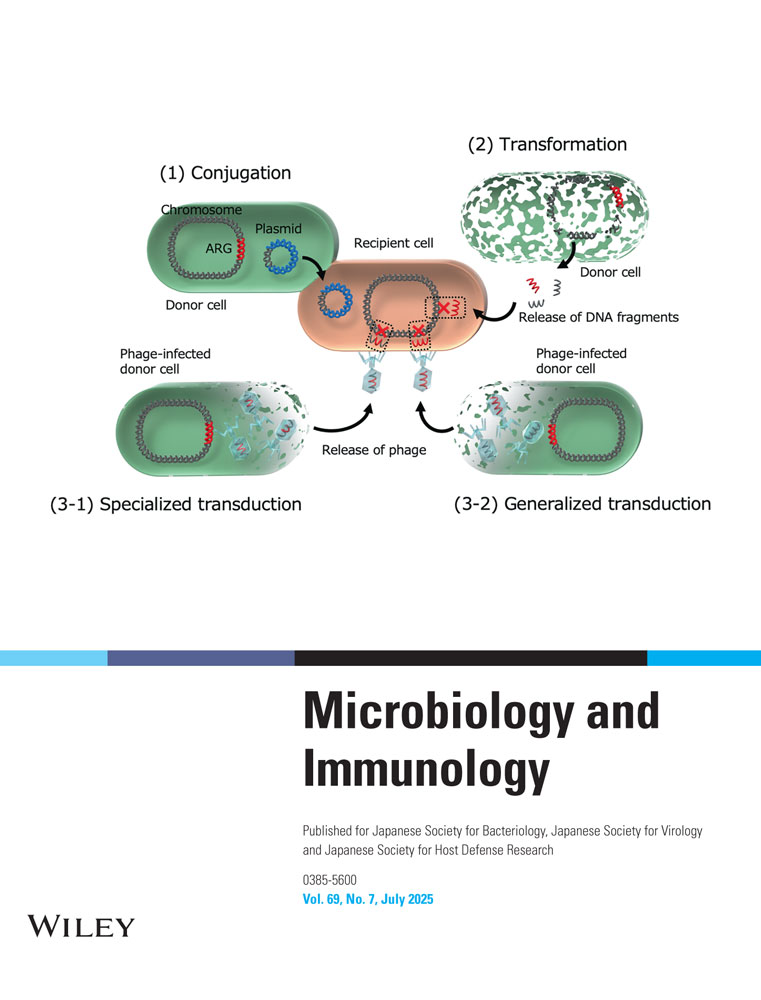Detection and Long-Term Existence of Shiga Toxin (Stx)-Producing Escherichia coli in Sheep
Abstract
The isolation and characterization of Shiga-like toxin (Stx)-producing Escherichia coli (STEC) from sheep are described. The distribution of stx genes in E. coli isolates was detected by PCR. When brain heart infusion (BHI) broth and novobiocin supplemented m-EC broth (N-mEC) were used as enrichment culture for the isolation of STEC, N-mEC, compared to BHI, showed clearly lower efficiency. Finally, 5 STEC isolates from 4 sheep were isolated and characterized by biochemical and genetical analysis. All of them were confirmed by ELISA and Vero cell cytotoxicity assay for the production of Stx. Moreover, some strains carried hemolysin and eaeA genes and harbored large plasmids. Based on their plasmid profiles, antibiotic patterns and PCR-based DNA fingerprinting analysis using random amplified polymorphic DNA (RAPD), all isolates were different from each other. Three of the isolates were identified to belong to serogroups O2, O153 and O165, respectively, and the STEC strains belonging to these serogroups had been isolated from STEC outbreaks in humans. Four months after the first isolation in July 1997, STEC from sheep #1 was isolated again. A new isolate, HI-11, was identified as STEC O2: Hnt. Simultaneously, 2 STEC, which were genetically and phenotypically different from each other, were isolated from the same sheep at intervals of 4 months. These results demonstrate that sheep may be an important animal for studying human STEC infections, and that further epidemiological surveys on STEC are necessary.
Abbreviations
-
- ELISA
-
- enzyme-linked immunosorbent assay
-
- PBS
-
- phosphate-buffered saline
-
- PCR
-
- polymerase chain reaction.




